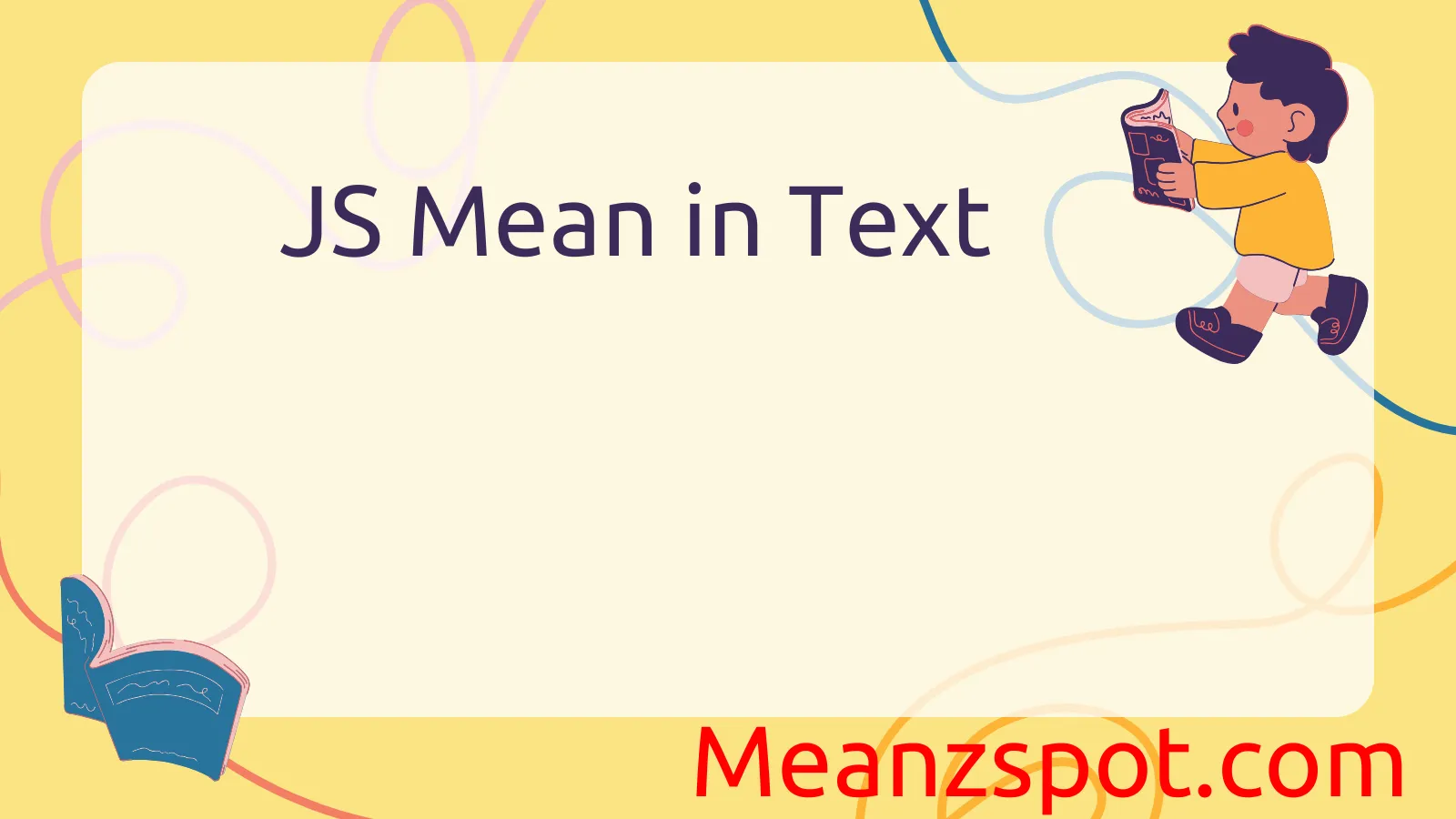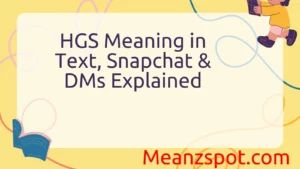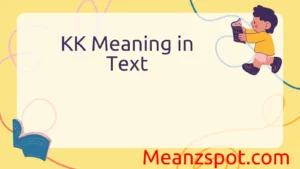Ever gotten a text that ends in “JS” and had no clue what it meant? You’re not alone. In today’s fast-paced world of Snapchat, TikTok, and text slang, staying on top of trending abbreviations is basically a full-time job. But don’t stress — we’ve got you covered.
In this updated guide, we’ll break down exactly what “JS” means in texting, how people are using it in 2025, and when you should use it too. Whether you’re a parent decoding your teen’s messages or just trying to keep up with your group chat, this quick read will make you fluent in digital slang — just saying.
Definitions & Meaning
“JS” is an abbreviation that primarily stands for “Just Saying” in text and online conversations. It’s a shorthand people use to soften the tone of their opinions or observations. When someone ends a statement with “JS,” they’re often trying to express a thought without sounding too direct or confrontational.
Example:
- “That movie was way too long, JS.”
- Translation: The person thought the movie was long but doesn’t want to argue about it.
In other contexts, “JS” can also refer to JavaScript, especially in professional or tech-related conversations. But in casual texting, “Just Saying” is by far the most common interpretation.
Other less common meanings of “JS” include:
- Junior School – Often used in academic contexts.
- Jump Shot – Common in sports commentary.
- Justice System – In legal or criminal justice discussions.
Still, in texting or on social media, if you’re wondering what “JS” means, chances are it’s “Just Saying.”
Origins & History
The abbreviation “JS” rose to popularity with the explosion of text messaging and early internet chatrooms in the late 1990s and early 2000s. People wanted quicker, shorter ways to communicate while still maintaining nuance. “Just Saying” became a go-to phrase for people to share blunt, honest, or sarcastic thoughts without sounding too harsh—and it was only a matter of time before it was shortened to “JS.”
Evolution Through Platforms:
- AIM & MSN Messenger (early 2000s): JS started gaining traction among teenagers and young adults.
- Twitter (mid-2000s to 2010s): With character limits, shortening phrases like “Just Saying” to “JS” became practical and trendy.
- Text Messaging & Instagram DMs (2010s–now): JS is now a staple in modern shorthand, often thrown in at the end of a statement.
The acronym reflects our growing need to communicate quickly, efficiently, and with just enough emotional buffer to keep things light.
Usage in Different Contexts
1. Casual Texting
In everyday text messages, “JS” is often tacked onto the end of an opinion to soften the delivery or make the comment sound less aggressive.
Example:
- “You probably shouldn’t wear those shoes with that outfit, JS.”
Here, the sender is giving an opinion but trying not to come across as rude.
2. Social Media
On platforms like X (formerly Twitter), TikTok, and Instagram, “JS” is often used in captions, comments, or posts where users want to share an opinion without inviting backlash.
Example:
- “People who don’t like pineapple on pizza have no taste. JS.”
It often adds a sarcastic or humorous tone to a bold statement.
3. Professional/Tech Settings
In a completely different context, “JS” is shorthand for JavaScript, a widely-used programming language. Here, it’s typically seen in emails, GitHub comments, or tech forums.
Example:
- “This JS function is throwing an error.”
Context matters here—a developer would instantly know it refers to code, not casual slang.
4. Pop Culture & Memes
In meme culture, “JS” is often used to deliver a punchline or ironic observation.
Example:
- A meme might read: “If your cat doesn’t come when called, it’s not a pet—it’s your roommate. JS.”
This usage plays up the humorous, sometimes snarky tone that makes memes entertaining.
Common Misunderstandings & Clarifications
Given that “JS” can stand for different things in different contexts, confusion is bound to happen. Let’s clear some of that up:
1. It Doesn’t Always Mean JavaScript
Not every use of “JS” refers to programming. Unless you’re reading a tech blog or talking with developers, assume “Just Saying.”
2. It’s Not Always Passive-Aggressive
While some people use “JS” to sneak in criticism, it’s not always meant to be shady. Sometimes it’s just a casual way to express a thought without drama.
3. It Can Be Overused
Some people toss “JS” at the end of every sentence, which can make their messages feel insincere or lazy. Use it sparingly for impact.
4. Context is Everything
If someone texts you “JS,” read the whole message before assuming it’s sarcastic or rude. The tone of voice can’t always be felt through text.
Alternatives & Synonyms
If you want to say “Just Saying” without using “JS,” here are some other ways to get the point across:
Text Alternatives:
- “Just my opinion”
- “Not to be rude, but…”
- “No offense, but…”
- “I’m just keeping it real”
- “FYI (For Your Information)”
Slang Synonyms:
- “I’m being real”
- “Low-key”
- “TBH (To Be Honest)”
- “NGAF (Not Gonna Argue Facts)”
Each of these has its own vibe—some more confrontational, others more neutral. Choose based on the tone you want to strike.
Frequently Asked Questions (FAQ)
1. What does JS mean in texting?
It typically means “Just Saying,” used to soften a blunt opinion or observation.
2. Is JS rude or sarcastic?
It can be, depending on how it’s used. Sometimes it’s just a way to express honesty without being offensive.
3. Can JS mean something else?
Yes. In professional settings, JS can stand for JavaScript. It may also mean Junior School, Jump Shot, or Justice System depending on context.
4. Is it okay to use JS in formal communication?
Not really. JS is informal and best reserved for casual texts or social media. In emails or professional settings, spell out your thoughts clearly.
5. What’s a good alternative to JS?
Phrases like “just my opinion” or “no offense” work well if you want to avoid slang.
6. How do I know what JS means when I see it?
Context is your best clue. If you’re in a group chat, it probably means “Just Saying.” If you’re in a tech thread, it likely means “JavaScript.”
7. Is JS a recent term?
Not really. It’s been in use since the early 2000s but has grown more common with the rise of texting and social media.
Conclusion
“JS” may be just two letters, but it carries more weight than you’d expect in digital communication. Most often, it’s short for “Just Saying”—a phrase that lets people express their opinions while keeping things casual or playful. But it can also be misinterpreted if you’re not careful with tone and context. Outside of casual settings, it might even refer to JavaScript or other terms, which makes reading the situation extra important.
So the next time someone drops a “JS” in a message, you’ll know exactly what they mean. Whether you’re texting, tweeting, or diving into a tech forum, this tiny acronym won’t leave you in the dark again.



